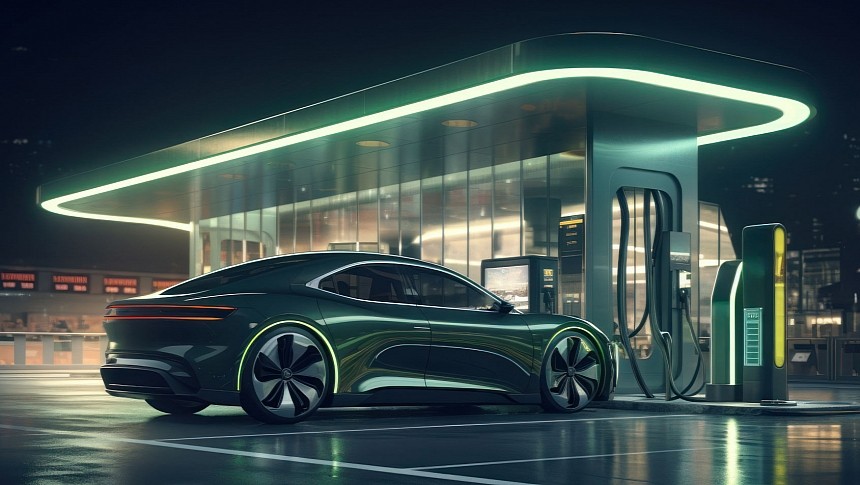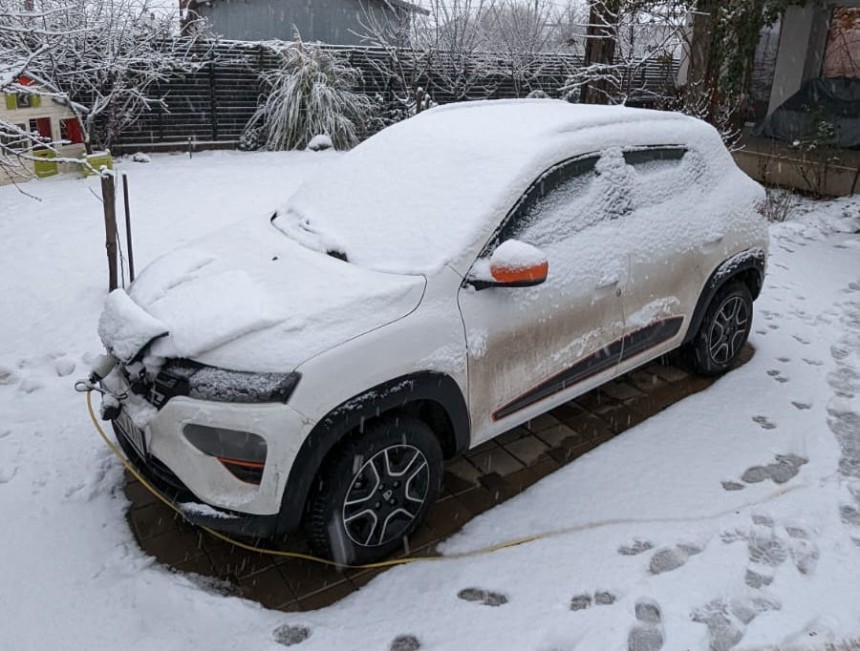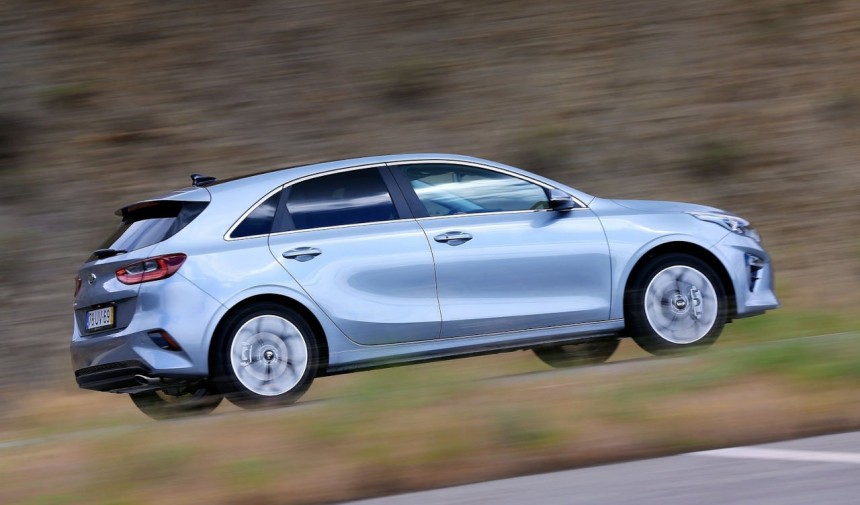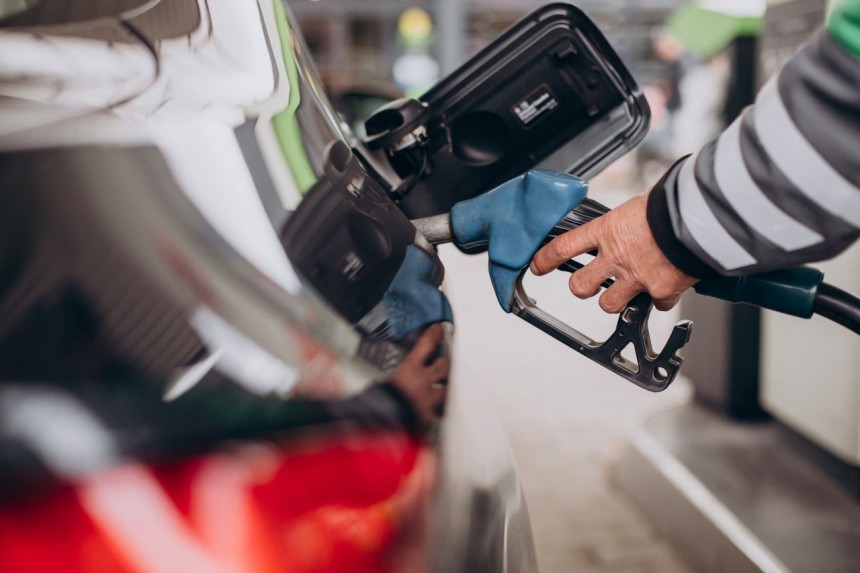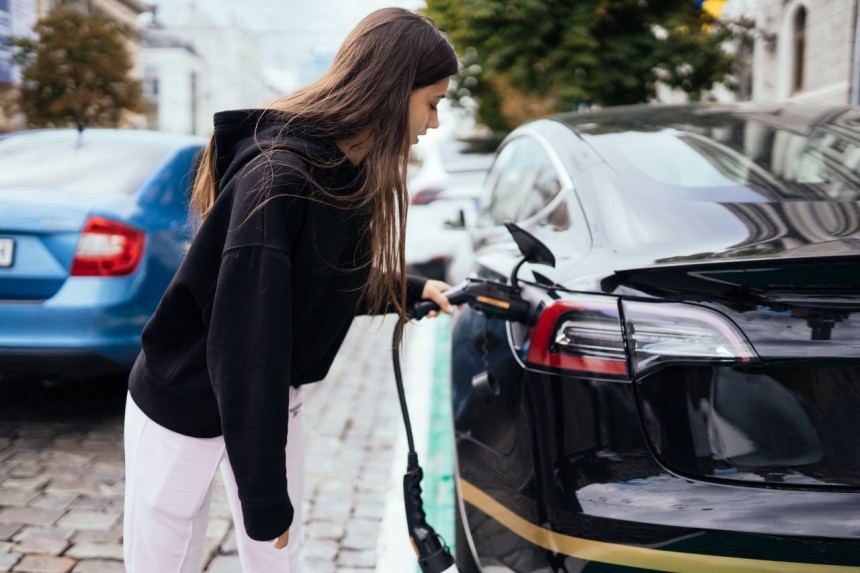Wait a minute, isn't 2023 the first year when a full-battery electric car became the best-selling car in the world? Tesla Model Y outperformed the Toyota RAV4 and Toyota Corolla by a pretty large margin, while the total number of EVs sold last year was almost ten million, a third more than in 2022. However, the EV uptake weakens, and I think I know why.
Today, around 35 million battery electric cars are roaming global roads, not counting the plug-in hybrids, which, oddly, are also considered "EVs" by many analysts, probably because of the false "PHEV" badge. While "millions" may sound like a lot, they make less than three percent of the 1.3 billion cars in use all over the planet.
One of those electric cars is my little Dacia Spring, the most affordable EV in Europe. That's largely thanks to its small-capacity battery (26.8 kWh usable capacity), providing one of the shortest WLTP ranges on the market: 230 km / 143 miles, which is not bad, in theory.
"Whoa, pal, are you tellin' me that in wintertime, you can only drive a hundred kilometers or some 60 miles until the battery is depleted?!" Well, yes, when it's -10°C outside, like a few days ago, its energy consumption simply doubles, from around 11-12 kWh/100 km to more than 20-22 kWh/100 km - consequently, the range halves.
Of course, there are valid explanations for this. For instance, the old chemistry of Spring's lithium-ion battery is prone to deficient performance in freezing times. But, hey, everybody knows by now that cold is an enemy for any other battery out there. Do you remember all those recent videos that went viral with EVs stuck on highways?
Besides, I must warm the interior so the air conditioner works all the time at maximum speed and the hottest temperature. Because it's a very cheap car, it has a "medieval" resistive heater, using a lot of electricity to heat wires and then blow the air over them into the cabin.
In fact, once, I did a very subjective test in freezing weather, and it seemed the heater was greedier than the electric motor when driving at speeds of up to 80 kph / 50 mph. On Dacia's website, there's also a range calculator, and it says that at 0°C and a speed of 110 kph / 68 mph, the maximum range is only 74 km / 46 miles.
At this point, all my friends think I'm an idiot for choosing this car, but there's this saying that is falsely attributed to Einstein: "Don't judge the fish for its ability to climb in the trees." The Spring is a small city car, and my daily commutes are around 60-70 km / 37-43 miles, or in scarce circumstances, 100-120 km / 62-74 miles.
I never had to drive until the battery was depleted because I never used this car for longer trips. And I don't intend to do it because, well, we have our gasoline family car for this. And this is where the inherent BEV vs. ICEV emerges…
In real life, after almost five years and around 90,000 km / 56,000 miles, the board computer shows an average consumption value of 7.5 liters/100 km, which is 31 MPG. Well, on longer trips, we use a roof box for more luggage, so the consumption difference is pretty significant.
But we also carefully use the car: no more than 140 kph / 87 MPG on the highway, no "push the pedal to the metal," clockwork maintenance and servicing. I know it sounds like I want to sell you the car, but I only want to put things into context, even if comparing the 3.7-meter Spring to this heavier 4.3-meter compact car is hardly ok.
Now, our family car has a 50-liter gasoline tank, and every time I fill it up, the board computer estimates a range of over 600 km / 370 miles. And yes, in mild weather and with a regular driving style, the car covers 600 km with one tank. In cold weather, I need to refill it after 450 km / 280 miles or even 400 km / 250 miles when it's really freezing.
The bottom line is, while charging home the Spring costs me 3 to 4 times less than filling the other car's gasoline tank, in the worst conditions, the gasoline car's range is at least four times better than the electric car's. This is a harsh reality, even if the comparison is far from apples to apples.
I'll continue this "manipulation" in the second part of this editorial. Wonder why I'm doing this? Well, I'm just trying to reverse-engineer the whole infowar we witnessed in recent years, which will peak in this historical leap year when half of the world's population will vote for democracy's fate on the whole planet.
However, this editorial is not about politics but a politically correct interpretation of facts. The previous storytelling is absolutely authentic; I didn't make it up. Depending on your stance, it can prove that the EV range is a significant issue or, on the contrary, just a problem that can be solved by compromise. We're not done yet.
One of those electric cars is my little Dacia Spring, the most affordable EV in Europe. That's largely thanks to its small-capacity battery (26.8 kWh usable capacity), providing one of the shortest WLTP ranges on the market: 230 km / 143 miles, which is not bad, in theory.
Cold weather and batteries are a hate-affair
In my experience, after two years and 25,000 km / 15,500 miles of commuting with the little feller on a mixed route comprising both extra-urban and inner-city, with a not economical, but also not aggressive driving style, the Spring is good for at most 200 km / 125 miles in mild weather. And about half in sub-zero temperatures."Whoa, pal, are you tellin' me that in wintertime, you can only drive a hundred kilometers or some 60 miles until the battery is depleted?!" Well, yes, when it's -10°C outside, like a few days ago, its energy consumption simply doubles, from around 11-12 kWh/100 km to more than 20-22 kWh/100 km - consequently, the range halves.
Besides, I must warm the interior so the air conditioner works all the time at maximum speed and the hottest temperature. Because it's a very cheap car, it has a "medieval" resistive heater, using a lot of electricity to heat wires and then blow the air over them into the cabin.
In fact, once, I did a very subjective test in freezing weather, and it seemed the heater was greedier than the electric motor when driving at speeds of up to 80 kph / 50 mph. On Dacia's website, there's also a range calculator, and it says that at 0°C and a speed of 110 kph / 68 mph, the maximum range is only 74 km / 46 miles.
At this point, all my friends think I'm an idiot for choosing this car, but there's this saying that is falsely attributed to Einstein: "Don't judge the fish for its ability to climb in the trees." The Spring is a small city car, and my daily commutes are around 60-70 km / 37-43 miles, or in scarce circumstances, 100-120 km / 62-74 miles.
Cold and ICE is a convenience marriage
So, my other car – cough-cough, sorry, our family car, because it's the car my wife drives most of the time – is a Golf-sized hatchback with a 120 HP gasoline turbo little engine. Theoretically, it burns around 6 liters of gasoline every 100 km, which is 39 MPG.But we also carefully use the car: no more than 140 kph / 87 MPG on the highway, no "push the pedal to the metal," clockwork maintenance and servicing. I know it sounds like I want to sell you the car, but I only want to put things into context, even if comparing the 3.7-meter Spring to this heavier 4.3-meter compact car is hardly ok.
Now, our family car has a 50-liter gasoline tank, and every time I fill it up, the board computer estimates a range of over 600 km / 370 miles. And yes, in mild weather and with a regular driving style, the car covers 600 km with one tank. In cold weather, I need to refill it after 450 km / 280 miles or even 400 km / 250 miles when it's really freezing.
Is there a point to this story?
Well, like in the "Inception" movie, I probably succeeded in subliminally "seeding" into your mind the "absolute truth" that EVs' range issues are "insurmountable" and EV adoption is futile. Of course, my fundamental objective is to make you believe that actually this belief is wrong, and most of the "range anxiety" propaganda is a misconception.However, this editorial is not about politics but a politically correct interpretation of facts. The previous storytelling is absolutely authentic; I didn't make it up. Depending on your stance, it can prove that the EV range is a significant issue or, on the contrary, just a problem that can be solved by compromise. We're not done yet.
